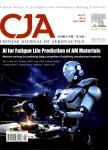Structural topology optimization under stationary random base acceleration excitations
Structural topology optimization under stationary random base acceleration excitations作者机构:Institute of Systems EngineeringChina Academy of Engineering PhysicsMianyang 621900China State IJR Center of Aerospace Design and Additive ManufacturingNorthwestern Polytechnical UniversityXi’an 710072China
出 版 物:《Chinese Journal of Aeronautics》 (中国航空学报(英文版))
年 卷 期:2019年第32卷第6期
页 面:1416-1427页
核心收录:
学科分类:1305[艺术学-设计学(可授艺术学、工学学位)] 13[艺术学]
基 金:supported by the Innovation and Development Foundation of ISE, CAEP (2017 cxj18) the Presidential Foundation of CAEP (YZJJLX2018008)
主 题:Dynamic response Large mass method Mode acceleration method Pseudo excitation method Random base acceleration excitations Topology optimization
摘 要:Structural topology optimization subjected to stationary random base acceleration excitations is investigated in this paper. In the random response analysis, the Large Mass Method(LMM) which attributes artificial large mass values at each driven nodal Degree Of Freedom(DOF) to transforming the base acceleration excitations into force excitations is proposed. The Complete Quadratic Combination(CQC) which is commonly used to calculate the random responses in previous optimization has been proven to be computationally expensive especially for large-scale problems. In order to conquer this difficulty, the Pseudo Excitation Method(PEM) and the combined method of PEM and Mode Acceleration Method(MAM) are adopted into the dynamic topology optimization, and random responses are calculated using these two methods to ascertain a high efficiency over the CQC. A density-based topology optimization method minimizing dynamic responses is then formulated based on the integration of LMM and PEM or the combined method of PEM and MAM. Numerical examples are presented to verify the accuracy of the proposed schemes in dynamic response analysis and the quality of the optimized design in improving dynamic performance.



